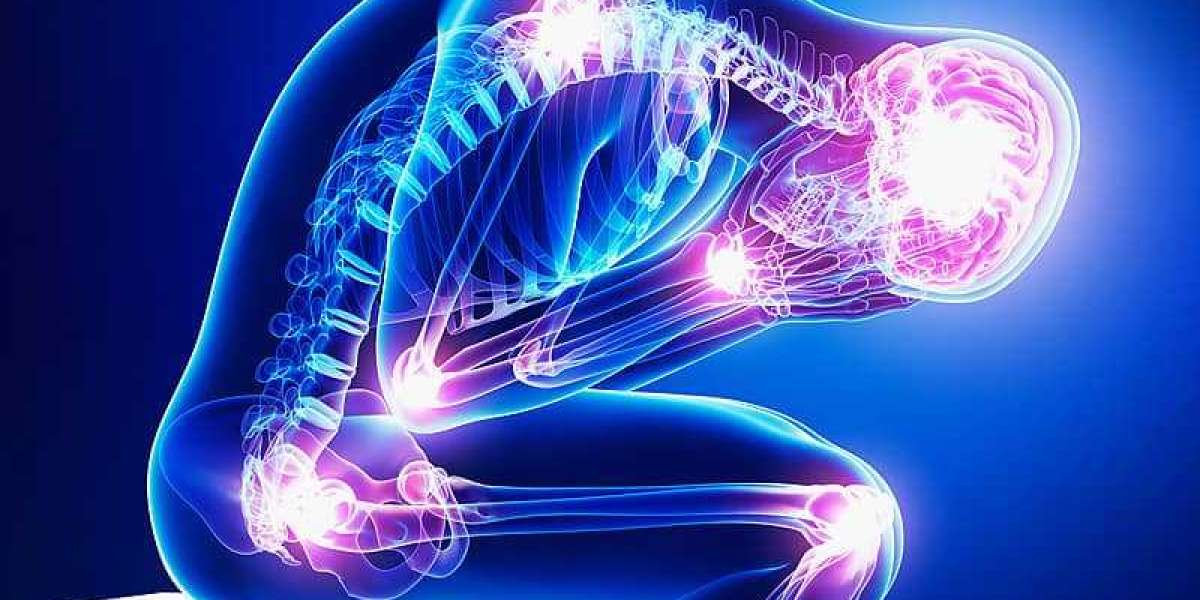Nerve pain, also known as neuropathic pain, is a complex and often challenging condition characterized by discomfort, tingling, or shooting sensations along the nerves. This type of pain originates from abnormalities or damage affecting the nervous system. In this exploration, we delve into the various causes and mechanisms underlying nerve pain, providing insights into the complexities of this often-debilitating condition.
Neuropathic Causes:
Neuropathic pain can arise from a range of conditions that affect the peripheral or central nervous system. Common causes include:
Diabetes: Prolonged high blood sugar levels in diabetes can lead to nerve damage, resulting in diabetic neuropathy and associated nerve pain.
Trauma and Injuries: Physical injuries, such as accidents or surgeries, may cause direct damage to nerves, triggering neuropathic pain.
Infections: Certain infections, like herpes zoster (shingles) or HIV, can affect nerve tissues and contribute to the development of neuropathic pain.
Autoimmune Disorders: Conditions like rheumatoid arthritis or lupus can lead to an immune system attack on the nerves, causing neuropathic pain.
Alcoholism: Chronic alcohol abuse can result in nutritional deficiencies and direct nerve damage, leading to neuropathic pain.
Understanding the specific cause of neuropathic pain is crucial for tailoring effective treatment strategies.
Mechanisms of Nerve Pain:
Nerve pain results from abnormal signaling within the nervous system. Key mechanisms include:
Peripheral Sensitization: Injury or damage to peripheral nerves can lead to heightened sensitivity, causing pain responses to non-painful stimuli. This phenomenon, known as allodynia, is a common feature of neuropathic pain.
Central Sensitization: Changes in the central nervous system, particularly in the spinal cord and brain, can amplify pain signals. This central sensitization contributes to the persistence and intensity of nerve pain.
Neuroinflammation: Inflammation within the nervous system can contribute to nerve pain. Immune cells releasing inflammatory mediators may sensitize nerves, leading to increased pain perception.
Maladaptive Plasticity: Long-term changes in the structure and function of nerve cells can occur, perpetuating the cycle of neuropathic pain. Maladaptive plasticity plays a role in the chronic nature of nerve pain conditions.
By unraveling these mechanisms, researchers and healthcare professionals strive to develop targeted interventions to disrupt the cycle of nerve pain.
Treatment Approaches:
Treating nerve pain requires a multimodal approach that addresses both the symptoms and underlying causes. Common strategies include:
Medications:
- Anticonvulsants: Drugs like pregabalin 75 mg often prescribed to stabilize nerve signals and reduce neuropathic pain.
- Tricyclic Antidepressants: Amitriptyline and nortriptyline can help modulate pain signals and improve sleep.
- Topical Medications: Creams or patches containing medications like lidocaine or capsaicin can provide localized relief.
Physical Therapy:
- Targeted exercises and physical therapy help improve muscle strength, flexibility, and overall mobility. Physical therapists play a crucial role in managing nerve pain.
Nerve Blocks and Injections:
- Injecting anesthetic or anti-inflammatory medications directly into or around affected nerves can provide temporary relief from nerve pain.
Spinal Cord Stimulation:
- This involves implanting a device that delivers electrical impulses to the spinal cord, modulating pain signals and providing relief for certain individuals with chronic nerve pain.
Complementary Therapies:
- Acupuncture, biofeedback, and relaxation techniques may complement traditional treatments, offering additional relief for some individuals.
Tailoring the treatment approach to the specific type and cause of nerve pain is essential for optimal outcomes.







